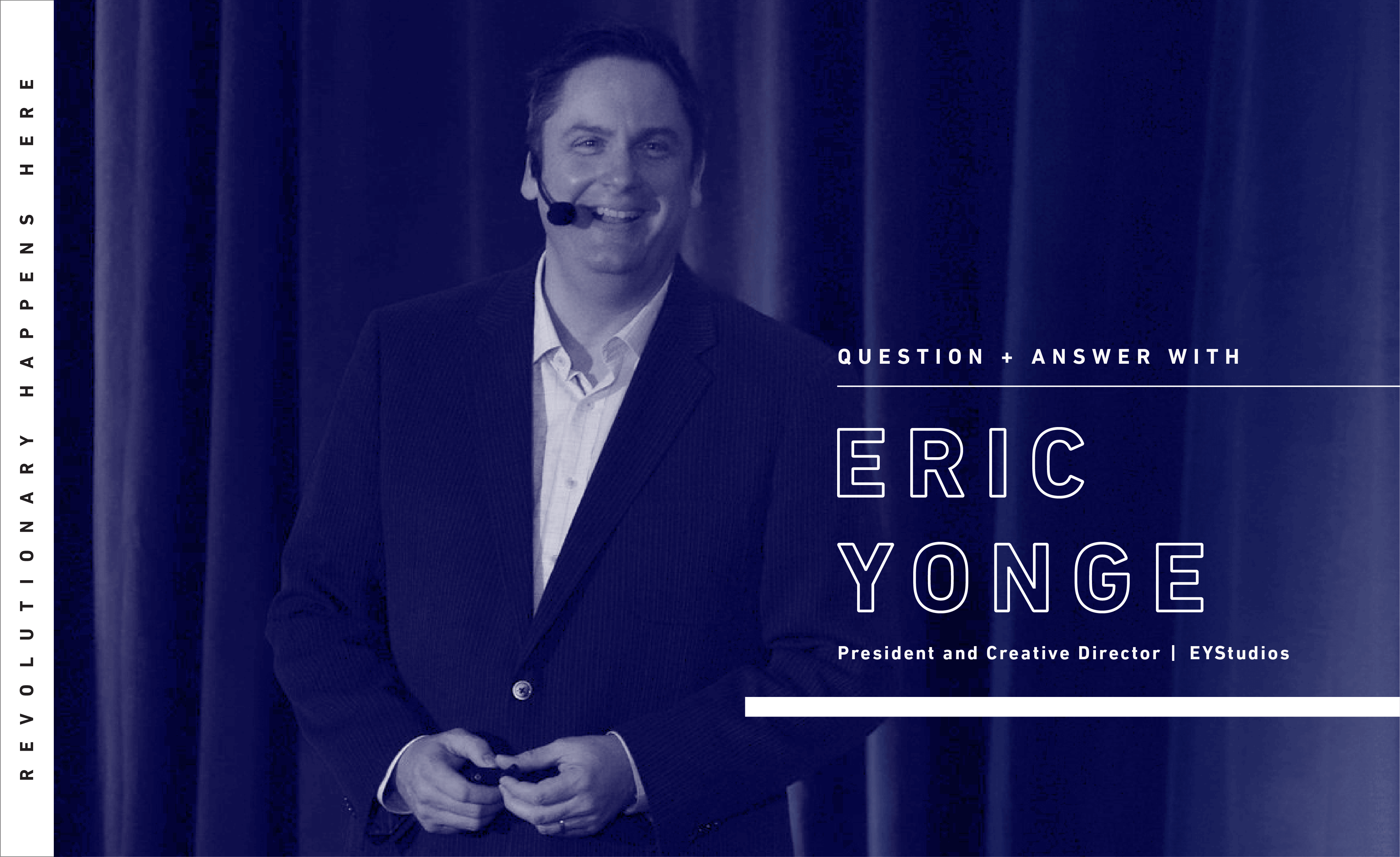
See why top ecommerce brands use Miva’s no-code platform to run
multiple stores, manage massive catalogs, and grow their revenue.
An interview with MivaCon 2017 speaker Eric Yonge, President and Creative Director of omnichannel design and brand development firm EYStudios, on the power of customer experience to boost conversion.
Manufacturers today have all the tools available to take control of their sales and distribution channels. The companies best positioned to seize control of sales and distribution will be the ones who can steer the customer experience well.
Eric Yonge and his team of designers, developers, and account managers at EYStudios have spent the last 13 years-plus transforming more Internet Retailer Top 1000 eCommerce stores than any other. From the power of story to boost conversion to the crack in Amazon’s armor and more, take a dive into omnichannel design with Eric Yonge.
Your brand is the sum total of experiences each customer has with your company which, today, is multiplied cross-channel. And when it comes to experience—as Eric posed in his captivating MivaCon 2017 keynote—emotion beats out reason.
“People don’t buy what you do; they buy why you do it. And what you do simply proves what you believe”
― Simon Sinek, Start with Why: How Great Leaders Inspire Everyone to Take Action
A defined brand not only engages omnichannel design, or message consistency across channels; it also envelops customers in a much larger intent, which venerated TED Talk speaker Simon Sinek calls your “why”. Your “why”, the purpose behind your business, is also your greatest differentiator from all the other fish in the sea because it’s unique to you.
“The biggest thing to me is to design a brand that is authentic, that is true to your culture; true to who you are,” said Eric Yonge. “Your customers will know if it’s inauthentic. If they see something that’s not legitimate, they don’t buy from that brand.”
Defining your brand is not as abstract as it may seem. Take these questions to set up the omnichannel design process:
“If you focus just on price, you’re missing out on every other nuance of the customer relationship, and you open yourself up for Amazon and other competitors to eat your lunch.”
-Eric Yonge, President and Creative Director, EYStudios
Once you’ve defined your brand story, unraveling it cross-channel is key to capturing customers. Omnichannel design is a customer-centric approach to sales that seeks to provide a seamless shopping experience regardless of channel.
“With a multi-channel story, you’re continuing the narrative in bite-sized chunks and [enticing] people [to] want more and more,” said Eric.
Deploying a brand’s story through omnichannel design may bring about qualitative success, but is it possible to measure its long-term effects? This is the question Eric and his team love to unravel for clients, accomplished most recently with an apparel brand. The company, which manufactures their own product, had all the right merchandise; they just didn’t know how to present it with passion. Instead they relied on slashing prices, which conditioned customers to wait for the sales and ultimately hurt conversion.
EYStudios implemented a custom shopping feature which highlighted product to complement a shopper’s past purchases. “It almost felt like the brand was a personal shopper because the narrative no longer centered on the discount,” said Eric. When the strategy shifted to focus on products that would impact the customer’s lifestyle, conversion rates soared.
“It was one of the most gratifying experiences because it galvanized the brand. [They] became more relevant to their customer base and completely blew their competitors out of the water. The narrative shifted, and when it shifts, it’s very hard to copy.”
-Eric Yonge
With the ability to reach customers directly, brands have the power to fix a once-broken feedback loop. “Business owners talk about being proactive, but I believe in being interactive,” said Eric Yonge. “An interactive brand interacts with customers and solicits feedback in a back-and-forth relationship.”
“That’s what makes a brand successful: direct interaction with the customer.”
-Eric Yonge
It is this focus on interactivity through omnichannel design which Eric believes gives brands an edge over Amazon. “Amazon is the ultimate generalist superstore. They can’t invest in a specialized experience because of their business model.”
While shoppers may find your product at a cheaper price somewhere else, studies show they are willing to pay more for a customized experience. From the ability to get questions answered by an expert, to a personalized shopping experience akin to what EYStudios implemented for their apparel client, to a wholesale purchase with built-in rules per region and more, buyers today expect a white-glove service—stat.
“What’s fascinating to me is, [the next generation of shoppers] want to buy direct and interact with brands more than ever. Additionally, 90% of the merchants in my breakout session manufacture their own products. They’re obviously gravitating to Miva,” said Eric at MivaCon. “Some platforms understand technological aspects, but they don’t understand how today’s customer wants to interact with brands. Miva does, and that’s very refreshing.”
What’s your perspective on, or experience with, omnichannel design? Has it been challenging or seamless, or is this process one you’ve just started to consider?
Jumpstart your omnichannel customer experience with Eric Yonge at EYStudios and follow up with his keynote Slaying E-Giants. Then discover more insights from MivaCon 2017 with influencers from ShipStation, PayPal, and Razorfish here, as well as from the Miva leadership team.
Back to topNo worries, download the PDF version now and enjoy your reading later...
Download PDF Miva
Miva
Miva offers a flexible and adaptable ecommerce platform that evolves with businesses and allows them to drive sales, maximize average order value, cut overhead costs, and increase revenue. Miva has been helping businesses realize their ecommerce potential for over 20 years and empowering retail, wholesale, and direct-to-consumer sellers across all industries to transform their business through ecommerce.
Visit Website